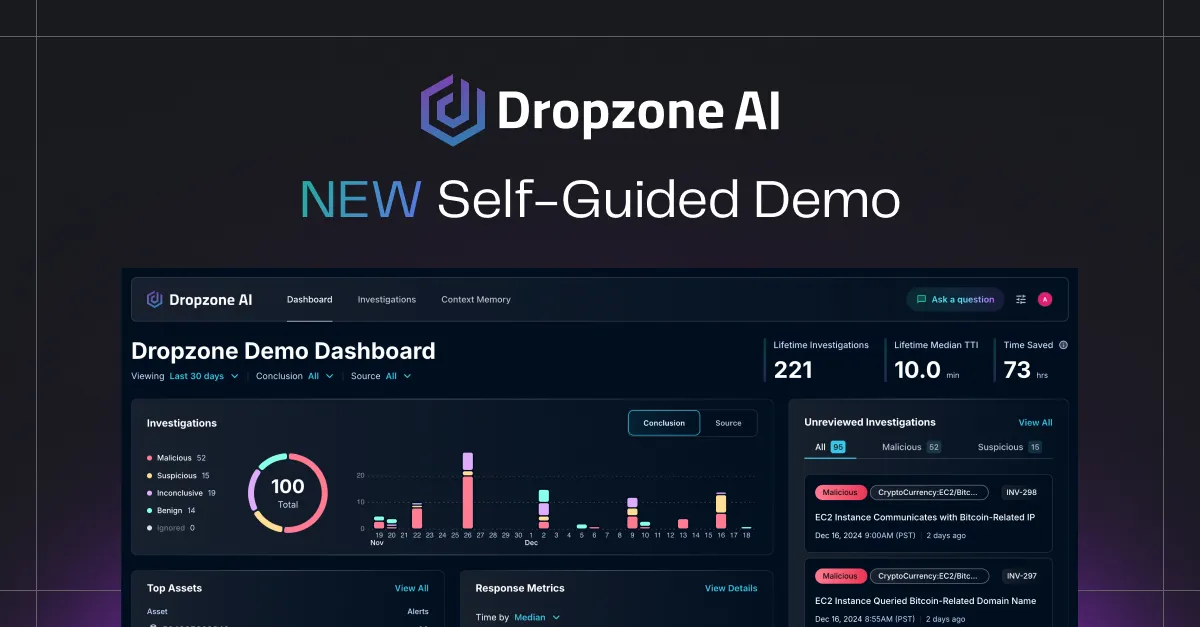What is Alert Fatigue in Cybersecurity?
Alert fatigue represents one of the most pressing challenges facing modern Security Operations Centers (SOCs). The Osterman Research Report reveals that almost 90% of SOCs are overwhelmed by backlogs and false positives, while 80% of analysts report feeling consistently behind in their work. This isn't merely an operational inconvenience, it's a critical vulnerability that attackers actively exploit.
The psychological toll mirrors that of alarm fatigue in healthcare settings. When humans face constant stimulation from alerts, our brains naturally begin filtering out these signals as background noise. This adaptive response, while protective against overstimulation, becomes dangerous when applied to security monitoring where any single overlooked alert could indicate a breach.
The Scale and Impact of Alert Fatigue
The numbers paint a stark picture of the crisis. The AI SOC Market Landscape 2025 found that 40% of alerts are never investigated, while 61% of teams admitted to ignoring alerts that later proved critical. With the average organization receiving 960 alerts daily from approximately 28 different security tools, the challenge becomes clear: security teams are drowning in data.
The SANS 2025 SOC Survey confirms that 66% of teams cannot keep pace with incoming alert volumes. This operational strain translates directly into business risk. IBM's 2024 breach report cites an average breach cost of $4.45 million with a 277-day containment timeline. Most alarmingly, the Verizon 2025 DBIR reveals that in 96% of breaches, the attackers, not the security team, disclosed the incident.
Human Cost of Alert Overload
Beyond operational metrics lies a human crisis. The ISC2 2024 Cybersecurity Workforce Study found that 67% of organizations report staffing shortages, while 66% of professionals report increased stress levels. The SANS 2025 survey reveals a particularly troubling statistic: 70% of SOC analysts with five years or less experience leave within three years.
This turnover creates a vicious cycle. New analysts require extensive training, experienced analysts carry heavier loads during transitions, and institutional knowledge walks out the door. The result is a security posture that weakens over time, even as threat sophistication increases.
What Causes Alert Fatigue in Security Operations?
Volume and Velocity Challenges
Modern organizations deploy an average of 28 security monitoring tools, each generating its own alert stream. This tool proliferation, while intended to improve security coverage, creates an overwhelming flood of notifications. Without proper correlation and deduplication, analysts face duplicate alerts for the same event across multiple platforms.
The sheer velocity of alerts means analysts have mere minutes to assess each one. With manual investigation taking 60-90 minutes per alert according to industry benchmarks, the math simply doesn't work. Teams must choose which alerts to investigate, inevitably leaving gaps in coverage.
The False Positive Problem
False positives represent perhaps the most insidious contributor to alert fatigue. When the vast majority of alerts prove benign, analysts naturally begin assuming most alerts are false. This learned behavior, while statistically rational, creates dangerous blind spots.
Generic rule sets and static thresholds exacerbate the problem. A rule triggering on any failed login attempt might generate hundreds of alerts from legitimate users mistyping passwords, obscuring the one alert indicating a brute force attack. Without context about normal user behavior, every anomaly appears equally threatening, or equally ignorable. This is where [false positive reduction] strategies become critical.
Lack of Context and Correlation
Alerts often arrive stripped of crucial context. An alert stating "suspicious network connection detected" provides no information about the source, destination, or why the behavior triggered suspicion. Analysts must manually gather context from multiple tools, transforming a simple assessment into a lengthy investigation.
This context gap extends to correlation between alerts. Related alerts from different tools appear as isolated events rather than connected attack patterns. An initial phishing email, subsequent malware download, and lateral movement might generate three separate alerts across three tools, with no indication they represent a single attack chain.
Traditional Approaches and Their Limitations
Organizations have tried various approaches to combat alert fatigue, with limited success. [Alert tuning] attempts to reduce noise by adjusting thresholds, but this risks missing subtle attacks. SIEM correlation rules help connect related events but require constant maintenance and still generate false positives. SOAR playbooks automate response workflows but struggle with scenarios outside their rigid programming.
The most common response, hiring more analysts, fails to scale. The ISC2 workforce study shows a global shortage of 4 million cybersecurity professionals. Even when positions are filled, new analysts require extensive training and contribute to the retention crisis when they burn out.
How to Prevent Alert Fatigue: Modern Solutions
The emergence of [AI-powered security operations] offers a fundamentally different approach. Rather than trying to reduce alert volume or hire more humans, AI systems can investigate every alert with consistent thoroughness. These systems apply the same investigative rigor to alert number 10,000 as to alert number 1, maintaining quality without fatigue.
Autonomous Investigation Capabilities
Modern [AI SOC analysts] function as tireless analysts, automatically investigating alerts using the same techniques as human experts. They gather context from multiple sources, analyze patterns, check threat intelligence, and produce comprehensive reports. This [autonomous alert investigation] happens in 3-10 minutes rather than the 60-90 minutes required for manual analysis.
By handling routine investigations, AI systems free human analysts to focus on complex threats requiring human judgment. This division of labor leverages the strengths of both AI (consistency, speed, scale) and humans (creativity, intuition, strategic thinking).
Intelligent Prioritization and Context
AI excels at providing the context that traditional tools lack. By learning normal behavior patterns for users, systems, and applications, AI can distinguish between anomalous-but-benign activity and genuine threats. This behavioral baseline becomes increasingly accurate over time, reducing false positives while maintaining detection sensitivity.
Pattern recognition capabilities allow AI to identify attack chains across multiple alerts and tools. Those three separate alerts (phishing, malware, lateral movement) become a single, high-priority incident with full context about the attack progression.
Measuring and Addressing Alert Fatigue in Your SOC
Organizations must first measure alert fatigue to address it effectively. Key metrics include:
- Alert-to-investigation ratio: What percentage of alerts receive investigation?
- Mean time to acknowledge (MTTA): How long do alerts wait before review?
- False positive rate: What percentage of investigated alerts prove benign?
- Analyst satisfaction scores: How do team members rate their workload and stress?
- Turnover rate: What percentage of analysts leave annually?
Warning signs of severe alert fatigue include increasing MTTA, declining investigation rates, rising employee turnover, and most critically, security incidents discovered by external parties rather than internal detection. Understanding Mean Time to Conclusion (MTTC) can provide a comprehensive view of your SOC's efficiency.
The Path Forward
Alert fatigue isn't an inevitable cost of modern cybersecurity; it's a solvable problem requiring the right approach. While traditional methods of tuning, correlation, and staffing have reached their limits, AI-powered investigation offers a scalable solution that addresses root causes rather than symptoms.
The key lies not in reducing alerts or hiring more analysts, but in fundamentally reimagining how organizations investigate and respond to security events. By combining human expertise with AI's tireless consistency, organizations can achieve comprehensive coverage without overwhelming their teams. Modern approaches like [alert triage automation] are making this vision a reality.
As cyber threats continue evolving at machine speed, our defensive capabilities must match that pace. Addressing alert fatigue isn't just about improving analyst quality of life, though that's critically important. It's about closing the detection gaps that attackers exploit and building sustainable security operations for an increasingly complex threat landscape.
Suggested Reading
Related Articles
- Building Proactive Security with AI SOC Analysts - Learn how AI transforms reactive security operations into proactive threat hunting
- How to Address Cybersecurity Alert Fatigue with AI - Practical strategies for implementing AI-powered solutions to combat alert overwhelm
- Context Memory: How AI SOC Analysts Learn Your Environment - Discover how AI builds institutional knowledge to improve investigation accuracy
Industry Reports
- AI SOC Market Landscape 2025 Report - Comprehensive analysis of AI adoption in security operations and alert volume trends
- SANS 2025 SOC Survey - Annual survey revealing operational challenges and analyst retention rates in modern SOCs









